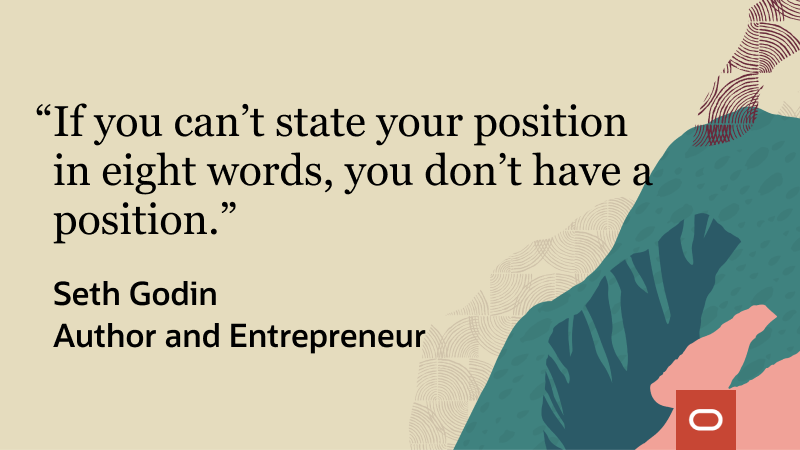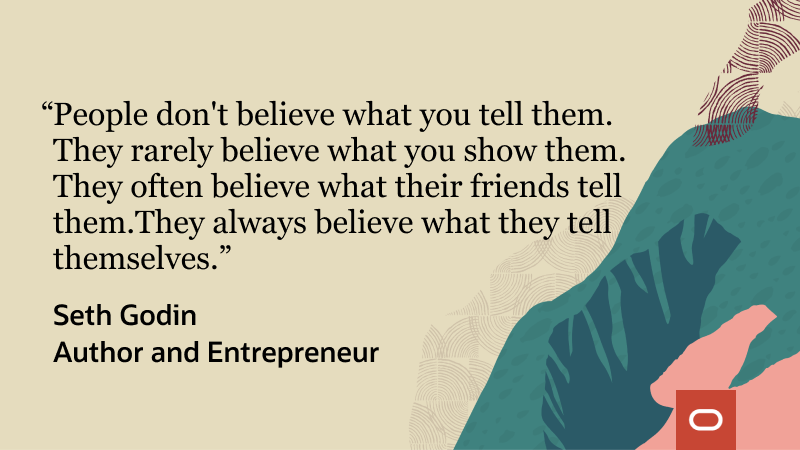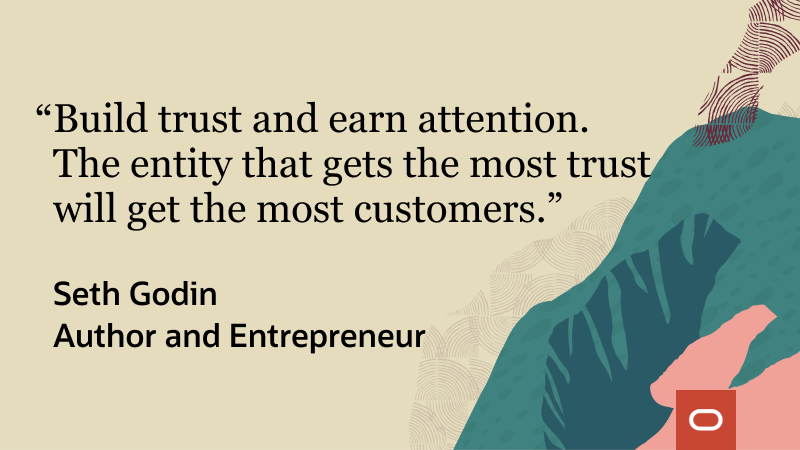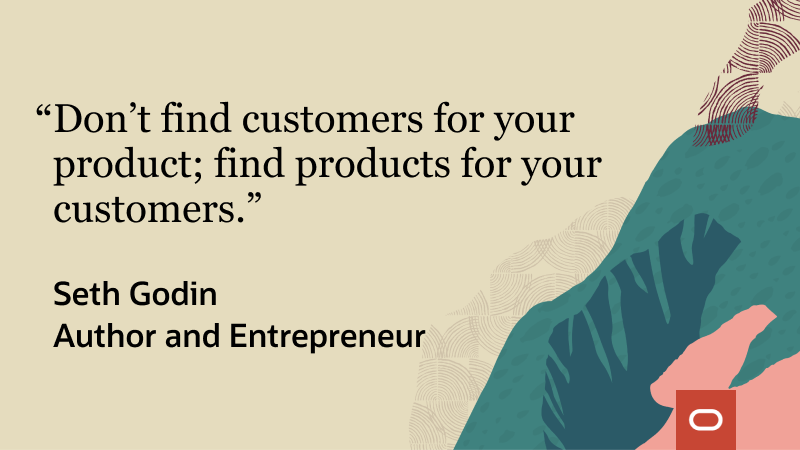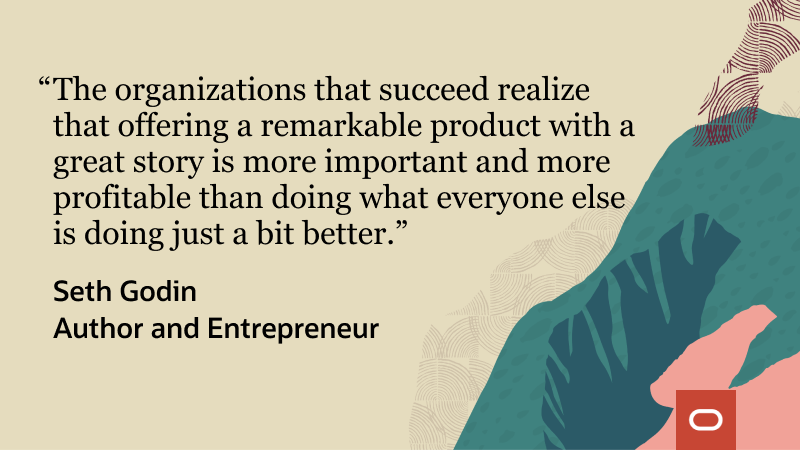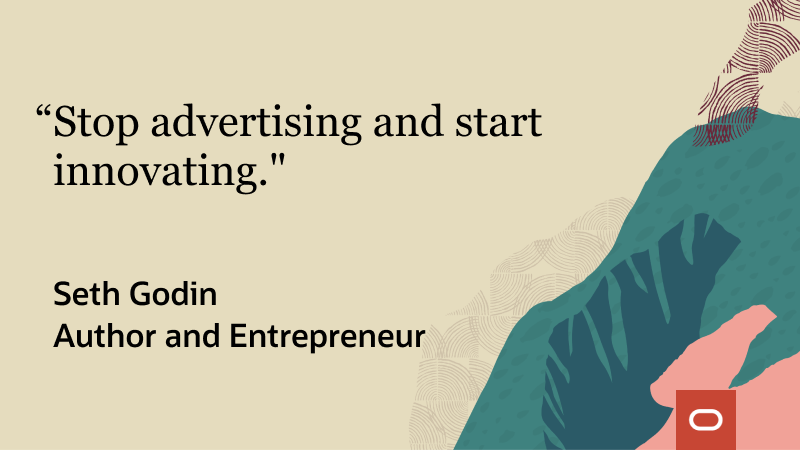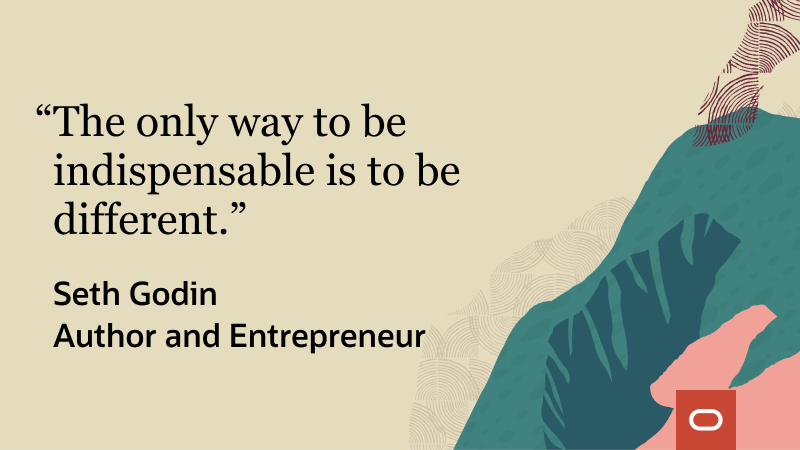Take inspiration for successful marketing from legendary marketer Seth Godin. Find out:
- More about Seth Godin and his achievements
- What he has to say about marketing
- Quotes to inspire your marketing campaigns and strategy
Who is Seth Godin (and why should marketers care)?
The most successful marketers learn from the best. Then they take those lessons, refine them, and make them their own for their campaigns.
Few names in marketing mean as much as Seth Godin. Author, entrepreneur, blogger, and AMA Marketing Hall of Famer, he’s done it all.
Long ago in 2001, he promoted his new ebook Unleashing the Ideavirus by giving it away for free long before anyone else had the same idea. It became one of the most downloaded books of all time.
Who better to learn from?
What does Seth Godin say about marketing?
Godin believes that marketers do a single thing: make change happen.
But to do so, you must understand what drives a person’s behavior. So, Godin charted out what he thinks motivates and propels someone to take action:
- Fear
- A desire for habit and ease that leads to a cognitive load (all the information a working memory can hold at a time)
- Greed arising from fear
- Curiosity
- Generosity and a drive for connection
With this in mind, Godin outlined marketing in five steps:
- Create, invent, write, or contribute to a thing worth making or a story worth telling
- Design and build it with only a few people in mind, so they will especially care about and benefit from it
- Craft and communicate a story that matches the dreams, goals, and narrative of the lives this small group of people lead
- Get the word out there about it
- Stay at it regularly, consistently, and generously for years and years to organize, lead, and build confidence in the change you want to make. This way, you earn permission to follow up with people, as well as teach, inform, and educate them.
Godin developed the concept of permission marketing (and wrote a book with the same name). What is permission marketing? It’s exactly what it sounds like.
You market only to those who have given you consent to do so. Examples include:
- Opt-in email marketing
- Subscription to a newsletter
- Subscribing or following a channel on YouTube, a blog, an influencer on a social platform, etc.
Permission marketing provides multiple benefits:
- Better segmentation and targeting due to working with a smaller audience
- Cost-effectiveness and efficiency from segmenting your small audience into even smaller groups that have already expressed an interest in your brand and use lower-cost tools, social, SEO, email, and so on.
- More conversions since you’re marketing to people already interested in your brand
- More personalization and longer-term customer relationships because you know this smaller audience better than a larger one and can focus more on their needs
- A stronger brand reputation that comes from only marketing to those who give consent, anticipate it, and get something out of what you offer
It sounds like years and years ago Godin saw the shape of modern marketing to come. Personalization, consent (especially when it comes to the data marketers use), and tighter, more targeted segmentation are all the rage now.
Get insights, events, and trends to stay up to date and anticipate the future from the Inside Modern Marketing Newsletter.
What else then can we learn from Seth Godin?
Let’s hear from the man himself. Check out these quotes about marketing from him and see what kind of fire they light inside you.
7 marketing quotes from Seth Godin
1. “If you can’t state your position in eight words, you don’t have a position.”
The good work of marketing means you understand your product and what you’re offering to customers. If you can’t put it simply and sum it up in a few words, how can you expect to get the word out about how customers will benefit?
Remember, you’re not selling dental work, a toothbrush, or toothpaste. You’re selling a brighter, whiter smile.
Get to the point and the benefits. Show people you can give them what they want.
Sharpen your copy and content writing. Learn the differences between them and tips to improve your marketing writing.
2. “People don’t believe what you tell them. They rarely believe what you show them. They often believe what their friends tell them. They always believe what they tell themselves.”
No one likes being sold to. If you try a hard sell, you can make someone uncomfortable. They might think you’re disingenuous or only out to make a sale rather than help them.
What to do instead?
There’s an old adage in writing: “Show, don’t tell.”
My earlier example about a brighter, whiter smile? It creates an image in someone’s head and shows them the benefit of a product.
But, like Godin said above, showing isn’t always enough. But people often believe what their friends, peers, and even competitors do.
How can you work this into your marketing?
Try a customer story or quote. That shows how your product worked and benefited someone. It’s not just you saying how awesome you are.
Check out this example of a customer success story. See how Oracle Red Bull Racing developed a customer loyalty program to keep fans energized and engaged.
But how to make someone believe what you want them to?
The next quote has the answer.
3. “Build trust and earn attention. The entity that gets the most trust will get the most customers.”
You earn a customer’s trust. They’re offering up their attention, time, and sometimes data. What are you giving them in return?
Are you just trying to make a sale or conversion?
No, you put in the work and provide valuable information over time. In blogs, social, newsletters, emails, and more, you offer answers to their pressing problems. You build a relationship with them.
Then they believe you because you’ve shown them they can.
4. “Don’t find customers for your product; find products for your customers.”
The golden rule of marketing: If you’re not offering something of value, then your marketing won’t be of value.
It might not just be your product. It could be your offer, the content you provide, the events you put on, the blog posts you publish, and so on and on.
Everything you put in front of a customer should offer value.
Moreover, the more relevant and personalized this value is, the better.
That’s marketing that gets results.
5. “The organizations that succeed realize that offering a remarkable product with a great story is more important and more profitable than doing what everyone else is doing just a bit better.”
Of course, a great product means nothing if you can’t do a great job promoting and marketing it. After all, a great product isn’t worth much if no one hears about it.
So, both your product and marketing have to be top quality.
You can’t just try to be a bit better than your competitors.
The average consumer receives close to 10,000 marketing messages or ads a day!
You have to stand out. You solve a customer’s problem, and you delight them.
Humor and happiness help a great deal.
According to research done by Oracle, 78% of people think brands can do more to deliver happiness.
41% of people are willing to leave a brand if it doesn’t make them smile. 80%, however, would buy from that brand again. 63% would spend more with them.
Furthermore, 69% of people would open an email from a brand if the subject line were funnier!
Helpful information, entertaining and informative news, and fun events.
You can provide it all. Do more for your customer. It’s what they want and expect.
Any relationship is a two-way street, after all.
They invest in your product and marketing. You invest in giving them the best experiences possible.
Find out more about why humor and happiness are important to your marketing with The Happiness Report.
6. “Stop advertising and start innovating.”
Obviously, Godin doesn’t mean to halt your advertising and marketing campaigns. He means take a step back.
Many wise marketers have said something close to this: The best marketing doesn’t sound like marketing.
So, stop trying too hard. If you have a helpful message, story to tell, and product, put it out there. Innovate with your product and marketing.
Go beyond what’s been done before.
Use humor. Add more value. Try a different type of marketing campaign than before.
Have you tried omnichannel or a new channel? New copy? New research?
Maybe even a new event?
Younger generations prefer shorter, snappier content, such as videos. How can you spruce up your video marketing and offer a visual, interactive experience they’d enjoy?
Sometimes, you don’t need one huge idea. Smaller ones and getting the details right can make more of a difference than anything.
Learn how to create better video content with this infographic.
7. “The only way to be indispensable is to be different.”
Humor, innovation, value, trust, and simplicity
I could go on and on, but you can’t keep doing the same campaigns and marketing you always.
The world is always changing. So are your customers and their needs.
Another great man named Albert Einstein said that insanity is doing the same thing over and over and expecting different results.
You have the data, strategy, and product to rise above the competition. So, get out there and do it.
The next great idea could be just around the corner. You only need to think of it.
Check out the latest marketing trends to see what solutions your competitors and peers are using to improve performance, adapt to changing circumstances, and deliver personalized experiences at speed.
Simplify your marketing, deliver value, innovate, and make your customers smile. Find out how with:
- The Happiness Report: Why humor and happiness are important to your marketing
- The top marketing trends and technologies to improve performance and adapt to changing circumstances
- Insights, events, and trends to engage and delight customers from the Inside Modern Marketing Newsletter

